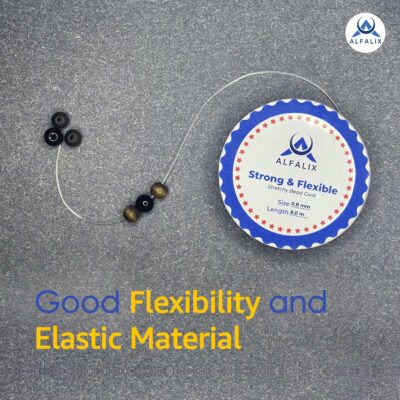Elastic thread is a type of thread that  is made from elastic fibers and is designed to stretch and retract when pulled. It is commonly used in sewing projects to create gathers, shirring, and other types of elasticized effects. Here are some advantages and disadvantages of using elastic thread in sewing projects:
is made from elastic fibers and is designed to stretch and retract when pulled. It is commonly used in sewing projects to create gathers, shirring, and other types of elasticized effects. Here are some advantages and disadvantages of using elastic thread in sewing projects:
Advantages:
- Versatile: Elastic thread can be used in a wide range of sewing projects, from clothing to home decor to accessories.
- Easy to use: Bracelet string is easy to work with and requires no special tools or equipment. It can be used in a regular sewing machine, and no special skills or techniques are required.
- Comfortable: Garments made with elastic string are often more comfortable to wear because they can adjust to the wearer’s body shape and movements.
- Time-saving: Elastic bracelet thread can save time and effort by eliminating the need for zippers, buttons, and other closures in certain projects.
- Economical: Elastic thread is relatively inexpensive and can be used to create elasticized effects without having to purchase separate elastic materials.
Disadvantages:
- Limited stretch: Elastic thread has limited stretch and may not be suitable for projects that require a high degree of elasticity, such as athletic wear or lingerie.
- Tension issues: Elastic thread can be challenging to work with because it requires a delicate balance of tension in order to achieve the desired effect. If the tension is too loose or too tight, the elasticized effect may not be even or consistent.
- Durability: Elastic thread may not be as durable as other types of elastic materials, such as elastic bands or waistbands.
- Limited use: Elastic thread may not be suitable for all types of sewing projects, and may not be the best choice for certain fabrics or designs.
Overall, elastic thread can be a useful tool in sewing projects, but it is important to weigh the advantages and disadvantages and consider the specific needs of your project before deciding to use it.

